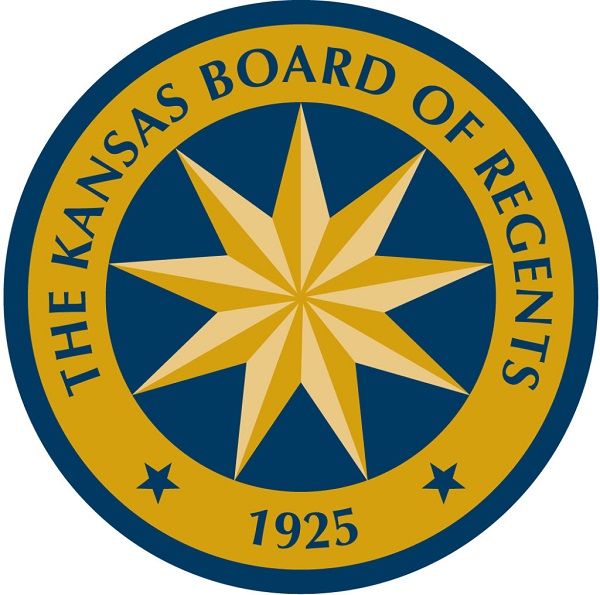Kansas universities have spent about $45 million on activities related to diversity, equity and inclusion, including about $9 million in state funds, according to a report that comes at a time when the issue is gaining increasing attention in the Legislature.
The audit documented those expenses from a broad and amorphous definition of DEI that covered a number of areas that included helping students with disabilities, veterans, international students and first-generation college students.
The expenses made up just a fraction of overall university spending and included items such as food pantries for disadvantaged students, tutoring and programs that connect university leaders to traditionally underrepresented student groups
The lack of a standard legal definition of DEI meant that auditors couldn’t guarantee they were collecting the same data from all universities because school officials don’t all think of the topic in the same way.
Legislative auditors reported the spending in a new audit that comes at a time when DEI is flaring up as an issue at the Capitol and has stalled the reconfirmation of Wichita businessman Jon Rolph to the Board of Regents.
There has been concern voiced by some Republican lawmakers that DEI has led to inequality on college campuses.
Republican state Rep. Kristey Williams, a member of the audit committee, said DEI’s goal was to foster an inclusive environment that would provide an equal playing field for students.
“In the recent months with different events happening across the country, there have been concerns about inequal treatment of students,” Williams said.
“I think that’s the opposite what DEI aims to do in its most altruistic sense,” she said.
The audit was requested by Republican state Rep. Steven Howe of Salina, who chairs the House Higher Education Budget Committee.
Howe is backing a bill that would bar state universities and community colleges from requiring statements about diversity, equity or inclusion as a condition of admission, financial aid or hiring faculty.
Howe declined to comment on the audit Wednesday until he had a chance to more readily digest its findings.
The auditors acknowledged that the state’s six universities did not have a single, shared definition of what constituted activities related to diversity, equity and inclusion.
However, the various views of university officials reflected some common themes such as improving access to higher education, auditors said.
Some school officials said that DEI activities are intended to create a university culture that values differences and belonging.
Others said that DEI activities help students live and work in a diverse world.
Heidi Zimmerman, the supervisor of the audit, told the legislative audit committee on Wednesday that the definition of DEI is very much in the “eye of the beholder.”
“There is no defined view of DEI,” Zimmerman said.
“The universities each kind of gave us their own view of what it is. Talk to 100 people and ask them what DEI is and you’ll probably get 100 different responses.”
University officials told the auditors that their goals for DEI-related activities were to recruit
and retain students.
They said that when students feel included on campus and have resources that support their success, they are more likely to finish their degrees.
The universities also said the goal of DEI-related programs was to increase economic prosperity in the state and prepare students to work in a diverse world.
Auditors asked the universities to report expenses related to common DEI themes shared across the the six state universities.
Auditors based their report on expenses related to any activity or service the universities provided to students who may not have the same opportunities to succeed as
other students.
The definition included some of the themes auditors heard from universities, including activities that break down barriers for improving student success.
The auditors asked the universities to report the personnel, training and other expenditures they thought met that definition for the 2022-23 school year.
Those activities included:
- Food pantries to provide basic needs to disadvantaged students.
- Support groups so that students can meet other students with similar
backgrounds or challenges. For example, one university reported therapy
groups for neurodivergent students. - Outreach programs that connect university leaders to traditionally
underrepresented student groups. For example, one university reported a
summer program that brought Hispanic students to campus to connect
with Hispanic leaders. - Tutoring or other educational resources to improve a student’s chances of
academic success.
During the 2022-23 school year, the six universities reported spending about $45 million on DEI-related activities, including $9 million in state funds.
The overall $45 million in DEI-related spending accounted for about 2% of the universities’ total expenditures of $2.8 billion, according to the audit.
The $9 million in state funds spent on DEI was equal to about 1% of the $742 million of the state appropriation for state universities.
DEI expenses that were not covered by state funds were paid for from federal funds, tuition and fees, and donations.
The University of Kansas spent the most on DEI-related activities at $18 million, including $2.6 million in state funds, audit showed.
Here’s the spending breakdown for the other five universities:
- Kansas State, $13 million, including $2.3 million in state funds.
- Wichita State, $10.2 million, including $2.3 million in state funds.
- Emporia State, $2.5 million, including $721,000 in state funds.
- Fort Hays State, $800,000 including $638,000 in state funds.
- Pittsburg State, $700,000 including $359,000 in state funds.
In responding to the audit, University of Kansas Chancellor Doug Girod said there was a lot of nuance in defining and tracking DEI spending.
“At KU, we believe in our responsibility to ensure that every single student feels a sense of inclusion and belonging,” Girod said in a letter responding to the audit.
“We know this has a direct effect on student enrollment, retention, and success, which is why we have made the investments shown in the report,” he wrote.
“Our diversity of people, ideas, and experiences enriches our educational service and
research missions. We continue to prioritize efforts to ensure KU is an academic
community that prepares students for an increasingly diverse world,” he wrote.
Many DEI services and activities the universities reported were not targeted to specific groups of students, the audit said.
Most of the universities told the auditors that many services are open to all students.
“However, some noted that specific groups of students may use certain services more often due to their needs,” the audit said.
“For example, students from disadvantaged backgrounds may be more likely to use the food pantry than other students,” the audit said,
Salary and benefits accounted for 97% of the state-funded DEI expenditures the universities reported. Reported staffing included:
- Administrative assistants in disability services, directors of international student services, and directors of belonging and inclusion offices.
- Teaching staff such as English language instructors and lecturers. For those staffers, DEI-related activities were often only a portion of their time. The auditors didn’t include DEI-related activities associated with teaching responsibilities.
- Mental health counselors, web developers and international student advisers.
- Student employees such as graduate teaching assistants, interns and
office staff.
Democratic state Sen. Ethan Corson, a member of the audit committee, didn’t discover any hot-button issues. He was skeptical of the audit when it was approved last year.
He said the amount of money spent on DEI was “relatively small” and included a broad spectrum of noncontroversial services that are trying to ensure student success.
The auditors noted that not all DEI-related staff are paid entirely with state funds.
In many cases, the auditors said, only a portion of the salary and benefits amount is paid for with state funds.
For instance, the salary and benefits of a director of international student services may be paid for with both state and federal funds.
However, a director of recruitment may be paid entirely with state funds. Conversely, some staff are not paid at all with state funding.
The auditors also pointed out that not all DEI-related staff spend all of their time on DEI-related activities. In many cases, only a portion of a person’s time is related to DEI.
For example, the auditors said the dean of arts and sciences may spend some time on DEI-related activities but also has many other responsibilities.
For other staffers, their only DEI-related responsibilities are in addition to their regular responsibilities, the audit said.
The audit found that state universities spent about $221,000 on DEI-related training and other nonpersonnel expenses like travel, software and outreach programs.
For example, one university reported it paid for travel costs related to recruiting underrepresented students.
Another university reported using state funds to pay 1% of the costs of a program that provides English language skills.













